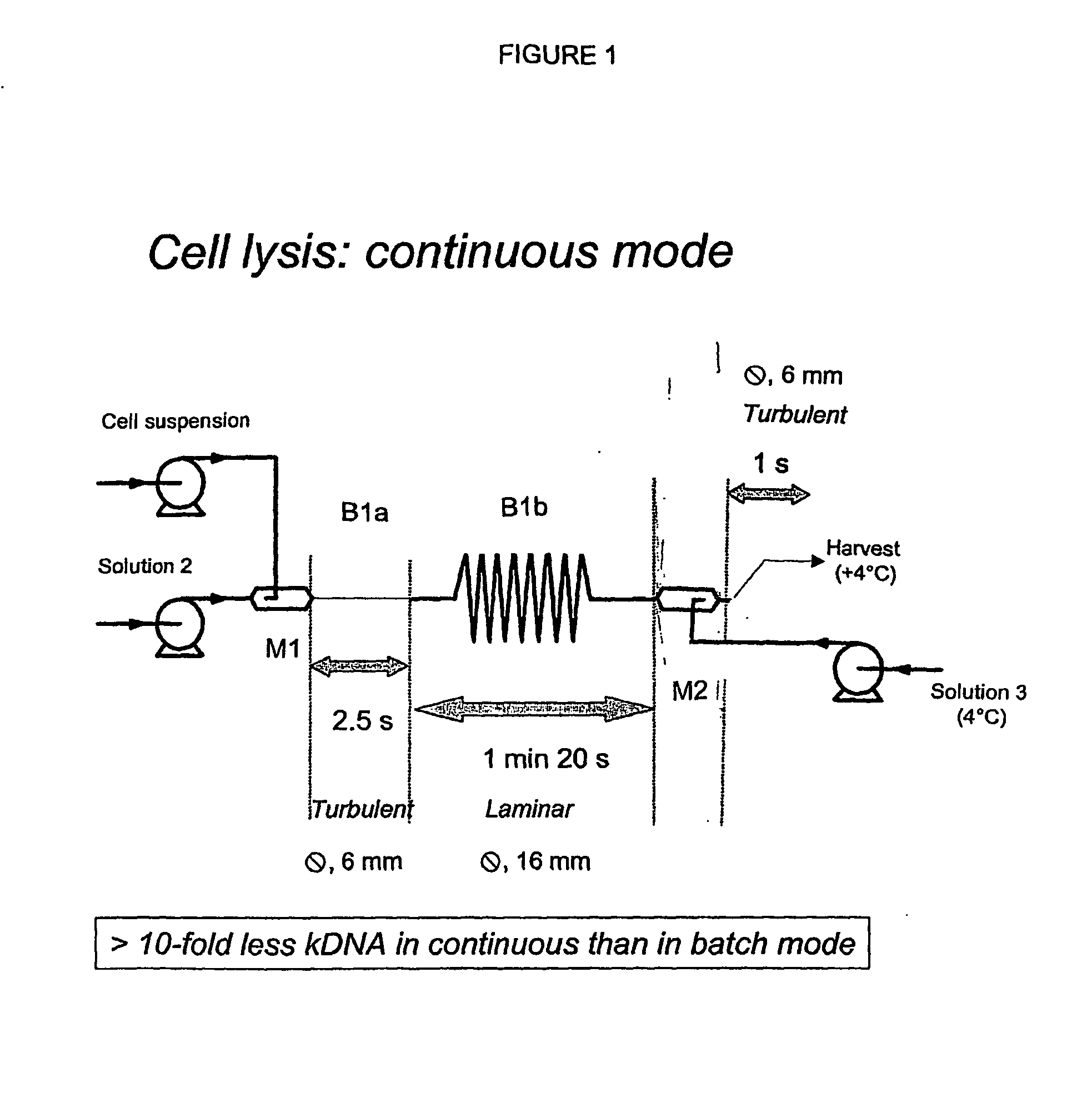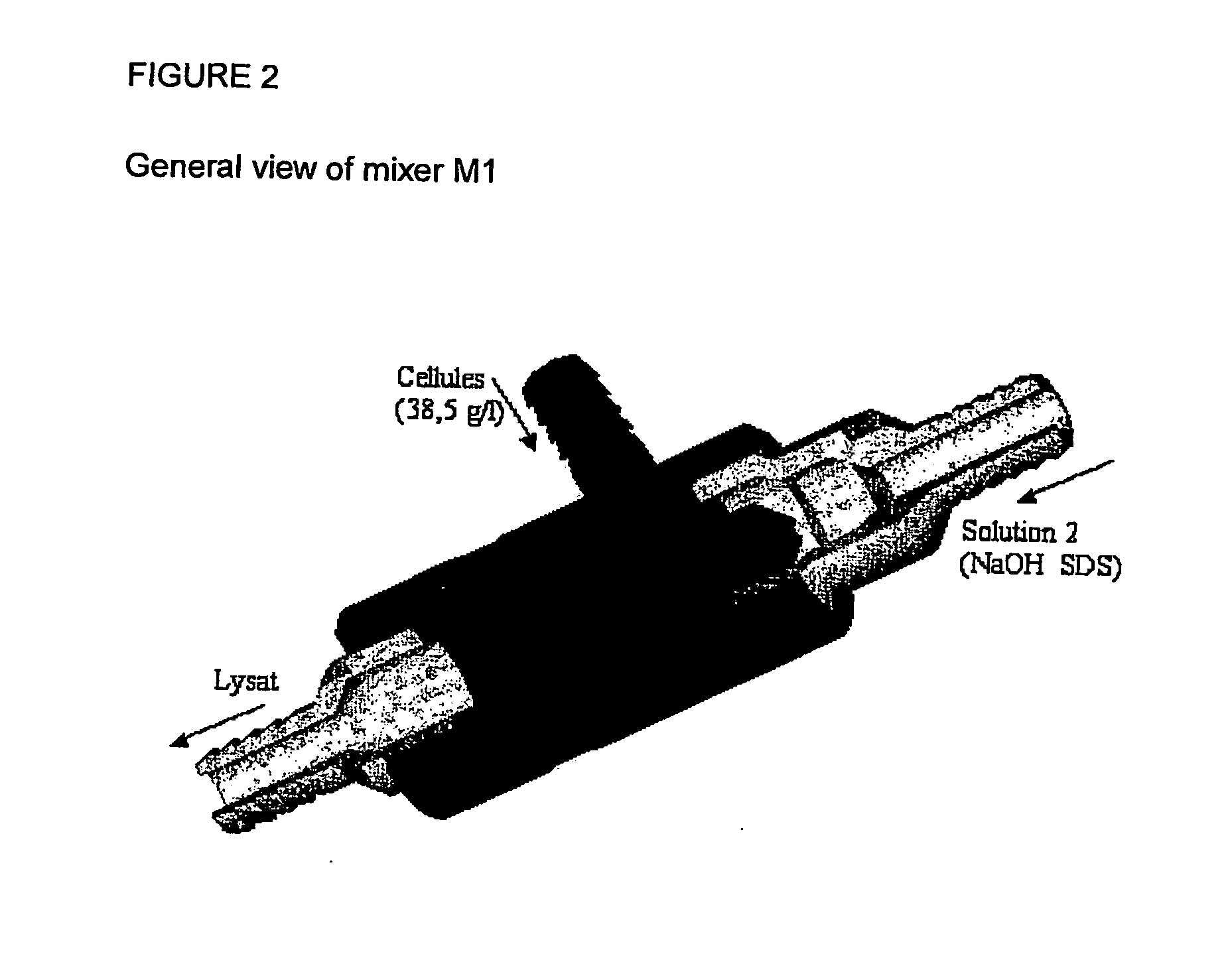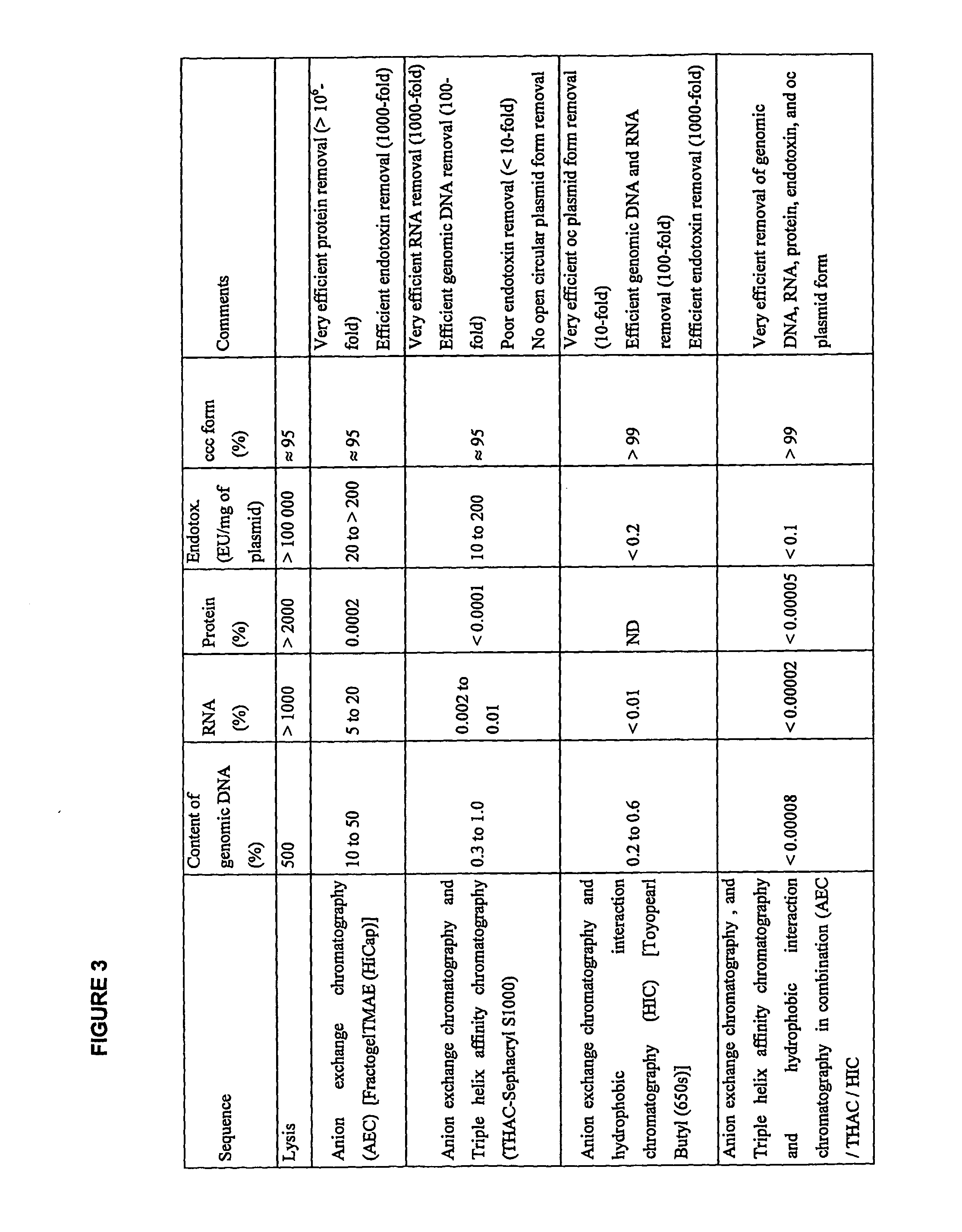Method for purifying plasmid DNA
a plasmid dna and purification method technology, applied in the field of nucleic acids purification, can solve the problems of insufficient quantity and quality of plasmid dna, and both manual swirling and magnetic stirring are not scalabl
- Summary
- Abstract
- Description
- Claims
- Application Information
AI Technical Summary
Benefits of technology
Problems solved by technology
Method used
Image
Examples
example 1
[0207] The adjustment of the diameters to the flow rates used follows from calculation of Reynolds numbers in coils of the continuous lysis system. Because the following analysis assumes that the behavior of the fluids is Newtonian, the figures reported below are only fully valid in B1a and to a certain extent in B2.
[0208] The value of the Reynolds number allows one skilled in the art to specify the type of behavior encountered. Here, we will address only fluid flow in a tube (hydraulic engineering).
[0209] 1) Non-Newtonian fluid
[0210] The two types of non-Newtonian fluids most commonly encountered in industry are Bingham and Ostwald de Waele.
[0211] In this case, the Reynolds number (Re) is calculated as follows:
[0212] ReN is the generalized Reynolds number
ReN=(1 / (2n−3))×(n / 3n+1)n×((ρ×Dn×w2−n) / m) (1)
[0213] D: inside diameter of the cross section (m)
[0214]ρ: volumetric mass of the fluid (kg / m3)
[0215] w: spatial velocity of the fluid (m / s)
[0216] n: flow behavior index (dimen...
example 2
[0250] We can break down the CL system into 5 steps. In one particular embodiment, the configuration is as follows: [0251] 1) Mixing: cells (in solution 1)+solution 2 (M1+3 m of 6 mm tube). Beginning of lysis of the cells by SDS, no risk of fragmenting DNA as long as it is not denatured. [0252] 2) End of lysis and denaturation of gDNA (13 m of 16 mm tube). [0253] 3) Mixing: Lysate+solution 3 (M2+3 m of 6 mm tube). [0254] 4) Harvesting the neutralized lysate at 4° C. [0255] 5) Settling down of flocs and large fragments of gDNA overnight at 4° C.
[0256] The following conditions may be used to carry out continuous lysis: [0257] Solution 1: EDTA 10 mM, glucose (Glc) 9 g / l and Tris HCl 25 mM, pH 7.2. [0258] Solution 2: SDS 1% and NaOH 0.2 N. [0259] Solution 3: Acetic acid 2 M and potassium acetate 3M. [0260] Flow rate 60 l / h: Solution 1 and solution 2 [0261] Flow rate 90 l / h: Solution 3. [0262] Cells adjusted to 38.5 g / l with solution 1.
[0263] The cells in solution 1 pass through 3 nozz...
example 3
[0277] The column used is a 1 ml HiTrap column activated with NHS (N-hydroxysuccinimide, Pharmacia) connected to a peristaltic pump (output<1 ml / min. The specific oligonucleotide used possesses an NH2 group at the 5′ end, its sequence is as follows:
(SEQ ID NO:1)5′-GAGGCTTCTTCTTCTTCTTCTTCTT-3′
[0278] The buffers used in this example are the following:
[0279] Coupling buffer: 0.2 M NaHCO3, 0.5 M NaCl, pH 8.3.
[0280] Buffer A: 0.5 M ethanolamine, 0.5 M NaCl, pH 8.3.
[0281] Buffer B: 0.1 M acetate, 0.5 M NaCl, pH 4.
[0282] The column is washed with 6 ml of 1 mM HCl, and the oligonucleotide diluted in the coupling buffer (50 nmol in 1 ml) is then applied to the column and left for 30 minutes at room temperature. The column is washed three times in succession with 6 ml of buffer A and then 6 ml of buffer B. The oligonucleotide is thus bound covalently to the column through a CONH link. The column is stored at 4° C. in PBS, 0.1% NaN3, and may be used at least four times.
[0283] The follow...
PUM
| Property | Measurement | Unit |
|---|---|---|
| Fraction | aaaaa | aaaaa |
| Fraction | aaaaa | aaaaa |
| Fraction | aaaaa | aaaaa |
Abstract
Description
Claims
Application Information
 Login to View More
Login to View More - R&D
- Intellectual Property
- Life Sciences
- Materials
- Tech Scout
- Unparalleled Data Quality
- Higher Quality Content
- 60% Fewer Hallucinations
Browse by: Latest US Patents, China's latest patents, Technical Efficacy Thesaurus, Application Domain, Technology Topic, Popular Technical Reports.
© 2025 PatSnap. All rights reserved.Legal|Privacy policy|Modern Slavery Act Transparency Statement|Sitemap|About US| Contact US: help@patsnap.com



